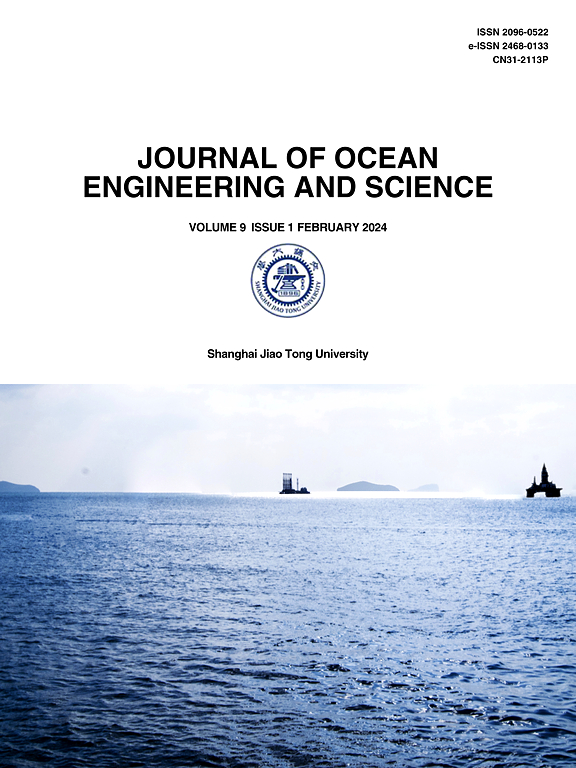Dynamics of optical pulses in birefringent fibers without four-wave mixing effect via efficient computational techniques
IF 11.8
1区 工程技术
Q1 ENGINEERING, MARINE
引用次数: 0
Abstract
In this manuscript, we discuss the dynamical behavior of Chen-Lee-Liu (CLL) equation in birefringent fibers which is modeled by two-component nonlinear Schrodinger equation (NLSE) without four-wave mixing effect. In optical fibers and other wave-guide mediums this system models the propagation of soliton flow using group velocity dispersion (GVD) and self-steeping coefficients. In the realms of maritime transport, motion, and energy, the dynamics of deep-sea waves is one of oceanography’s greatest challenges. A mathematical model of the dynamics of solitary waves in the deep ocean under a two-layer stratification yields the NLSE, and resultantly, the interaction between the two can be described by a coupled NLSE. Using two recently developed integration tools, namely the generalized exponential rational function method (GERFM) and the new extended direct algebraic method (NEDAM), the various optical pulses in the forms of bright, dark, combined, and complex solitons are extracted. Moreover, the hyperbolic, exponential, and trigonometric function solutions are recovered. In addition, a comparison is made between our results and those that are well-known, and the study concludes that the solutions we’ve reached are novel. By choosing appropriate parameter values for numerical simulation and physical explanations, the significance of the results is demonstrated. The results of this paper can enhance the nonlinear dynamical behavior of a given system and demonstrate the suitability of the methodology employed. This research, in our opinion, will be beneficial to a wide variety of engineering model specialists.
基于高效计算技术的无四波混频双折射光纤中光脉冲动力学
本文讨论了用双分量非线性薛定谔方程(NLSE)模拟的双折射光纤中没有四波混频效应的Chen-Lee-Liu (CLL)方程的动力学行为。在光纤和其他波导介质中,该系统使用群速度色散(GVD)和自渗透系数来模拟孤子流的传播。在海洋运输、运动和能源领域,深海波浪的动力学是海洋学面临的最大挑战之一。在两层分层条件下,深海孤立波动力学的数学模型得到了最小二乘线线,因此,两者之间的相互作用可以用一个耦合的最小二乘线线线来描述。利用最近发展起来的两种积分工具,即广义指数有理函数法(GERFM)和新的扩展直接代数法(NEDAM),提取了亮孤子、暗孤子、组合孤子和复孤子形式的各种光脉冲。此外,还恢复了双曲、指数和三角函数的解。此外,我们的研究结果与那些众所周知的研究结果进行了比较,得出的结论是,我们得出的解决方案是新颖的。通过选择合适的参数值进行数值模拟和物理解释,论证了结果的意义。本文的结果可以增强给定系统的非线性动力学行为,并证明所采用方法的适用性。这项研究,在我们看来,将有利于各种各样的工程模型专家。
本文章由计算机程序翻译,如有差异,请以英文原文为准。
求助全文
约1分钟内获得全文
求助全文
来源期刊

Journal of Ocean Engineering and Science
Multiple-
CiteScore
11.50
自引率
19.70%
发文量
224
审稿时长
29 days
期刊介绍:
The Journal of Ocean Engineering and Science (JOES) serves as a platform for disseminating original research and advancements in the realm of ocean engineering and science.
JOES encourages the submission of papers covering various aspects of ocean engineering and science.
 求助内容:
求助内容: 应助结果提醒方式:
应助结果提醒方式:


